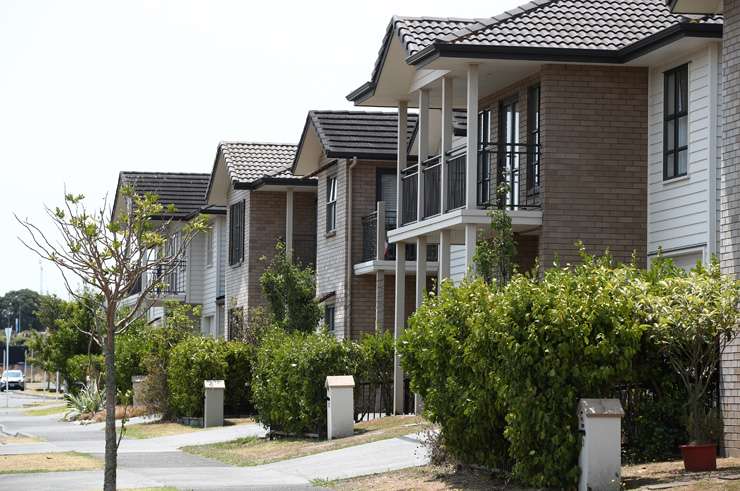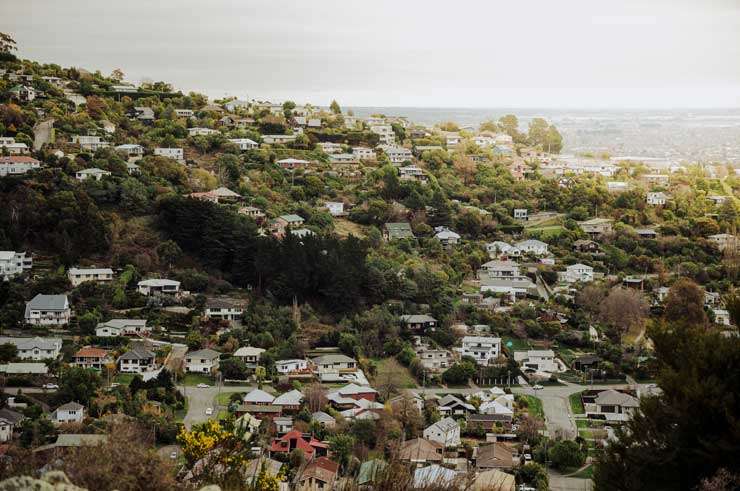Have apartments and terrace houses come of age? With the explosion of apartments and terraced housing across the country, OneRoof and its data partner Valocity looked at the most popular types of homes sold in 2021.
The data shows we’re changing. McMansions are out and we are favouring smaller homes, mostly. But thanks in part to the existing housing stock, the most common purchase is a standalone home. It’s just getting smaller.
Across every suburb in the country, bar one, standalone houses are still the most popular property typology, says James Wilson, director of valuations at Valocity. The only one where it’s not is Auckland Central, solely due to the predominance of apartments.
That masks the changes happening on the ground. What New Zealanders are living in is changing significantly in Auckland in particular. This year apartments and townhouses/units made up 29% of total sales in the city, up from 18.94% in 2010.
Start your property search
Wilson says that townhouses and units have increased their share over the 11-year period in Auckland, from 9.9% in 2010 to 20% in 2021, while apartments have gone from a 9.1% share in 2010 to a peak of 11.5% in 2017, but have now fallen back to 2010 levels.
Another notable outcome in the data is that three-bedroom homes are the most common home sold in every territorial authority in the country despite anecdotal data that New Zealand families expecting a room each of their the children, plus a room for guests and one for the TV.
Some of the more interesting numbers to come out of the Valocity data related to the age of the houses being sold. For example, homes built in the 1910s are the biggest sellers in Wellington and Dunedin, as well as smaller towns and districts such as Buller, Carterton, Clutha, Gore, Hauraki, South Wairarapa, Waimate and Whanganui.

Valocity director of valuations James Wilson says standalone homes are still popular but they are getting smaller. Photo / Supplied
At the other end of the scale, homes built in the last 11 years are the biggest sellers in Tauranga, Queenstown-Lakes and Selwyn, as well as Western Bay of Plenty, Waimakariri and Central Otago.
Buyers in 18 TAs, including Hastings, Palmerston North, Masterton and Upper Hutt, typically choose homes built in the 1950s, while 1960s is the era du jour for buyers in Ashburton, Gisborne, Invercargill and Whangarei. The dominant era of housing stock in Rotorua, New Plymouth and Hamilton is the 1970s, while 1980s-built homes are thick on the ground in Whakatane, Taupo and the Kapiti coast.
Auckland’s average era of housing stock is the 1990s and Christchurch is the 2000s:
Different regions and markets have their own flavour, though.

Terrace housing in the Auckland suburb of Stonefields. Photo / Fiona Goodall
Jeremy O’Rourke, managing director of Lodge Real Estate, in Hamilton, says buyers in the city are embracing lockup and leave-type homes, including apartments and townhouses with small footprints. “This is evident across all price ranges,” he says, although affordability is one of the key drivers of the change in buying tastes.
“However, many of the young people who appreciate newer properties on smaller footprints are the children of parents who have modern homes, particularly in the northeast of the city (around) Flagstaff /Rototuna. They have grown up with modern heating, insulation, double glazing etc and value those features more than a larger back yard.
“Higher up the price scale the driver which powers the movement to smaller land size is lifestyle.” O’Rourke says Hamiltonians are looking for lower maintenance homes, because they value lock and go for weekends at the beaches, lakes or mountains. “Many have decided that they don’t need the burden of section maintenance.”
Thanks to the earthquakes resulting in the widescale replacement of homes in Christchurch and much of wider Canterbury the housing stock is quite different to many parts of New Zealand.
Bayleys general manager sales for Canterbury Rachel Dovey says the dominant trend remains for a moderate sized residential home with a garden and section. Anyone visiting Christchurch in recent years will see what look like large numbers of townhouses and apartments springing up, especially in the central city and surrounds.

The view over Christchurch. The Canterbury earthquakes have changed the nature of housing in the region. Photo / Getty Images
“The new dwellings are townhouses, and multi dwelling apartment buildings. (But) they tend to be more boutique in size and scale and not the typical large scale apartment buildings that we see in other major cities.”
Those smaller dwellings in the city are balanced out in the sales numbers by large developments of more traditional homes in the fast-growing Selwyn district, says Dovey.
“These sections have been snapped up as families make the most of the new infrastructure and motorways in this area making the commute into Christchurch so very easy and efficient. The land was divided up and services were developed in the post-quake era as the city scape changed and there was increased demand for new housing.”
In both Hamilton and Canterbury as well as other reasons there is still good demand for lifestyle properties, say Dovey and O’Rourke.
In Canterbury has seen buyers looking at lifestyle properties to get more space to store/accommodate/utilise for jet-skis, motorboats, mountain bikes, motorhomes, spa pools and other toys , says Dovey. “Many purchased recreational items after the lockdowns last year, with many now finding that their suburban residential addresses simply don’t have enough storage space to efficiently house all those recreational accoutrements.”


















































































